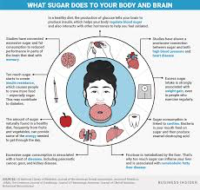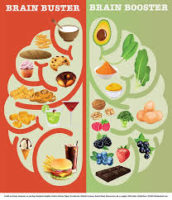Eating for energy. Learn to make sustainable food choices that fuel your body and the planet!
Sustainable food items improve the quality of life, age, illness and ensures the safety of our families and our planet. Educating ourselves on this will allow us to understand food consumption. The choices made about what food we consume, how it was produced and manufactured, ultimately affects our health and the health of our children.
The food we eat directly has either positive or adverse effects on our body and our environment.
The choice of whether to choose foods that are sustainably made or not –is ours.
Steps to ensure you are eating: a nutritious and beneficial and environmentally conscious diet – and how to choose food choices that conserve our planet’s energy and provide us energy.
- Learn where your food comes from.
- Buy local. Buy Fresh. Make Your Own.
- Less is more. Reduce food waste. Try not to buy more than you need.
- Read food labels. Know what you are buying.
- Avoid toxins.
- Know the Dirty Dozen – Top 12 foods in 2019 highly sprayed with pesticides.
- Know the Clean Fifteen – Top 15 foods in 2019 listed as the cleanest and best to eat.
- Understand produce numbers: Veggie and fruit organic vs. non-GMO vs. grown with the use of pesticides.
- Avoid pesticides. Pesticides have been linked to causing harm to our central nervous system, harm to insects and habitats and depletes our soil of nutrients.
- Choose organic.
- Avoid chemically processed foods or artificial coloring or food dyes, or food additives or food preservatives. (Consumption of highly processed foods over time has been proven to cause adverse effects on our health.)
- Eat for Energy. Choose high energy foods.
- Choose plants. Develop healthy eating habits. Eat less meat.
- Free-range eggs, factory vs. farm-raised, antibiotics and hormones vs. organic and humanely raised.
- Avoid refined sugar. Scientific proof has shown us that sugar has adverse effects on our health and wellness. And studies have proven that sugar has no positive effect on moods.
- Eat at Green Certified or sustainably ran restaurants.
- Use food delivery only for special occasions.
- Just say no to plastic cutlery, styrofoam, or to the non-recycables ahead of time.
- Choose products and purchase items from sustainable brands, your dollar is your vote.
- Support the American Sustainable Business Council.
- Pack a lunch. Choose reusable containers and eco-friendly items.
- Avoid single-use plastics, Items that contain BPA or Bisphenol A
- Understand plastic recycling symbols: 1,2,3,4,5, & 6; know where and how to recycle each.
- Choose habits that encourage waste reduction and save energy.
- Lead by example. Teach others. Empower our youth to respect Earth.
- Commit. Learn. Share your knowledge. Inspire others.
Where does our food come from?
Our food’s journey to our plates has a direct impact on our environment, on the nutritious value of the food–and our health. Food manufacturing – how food is grown, processed, and transported, all impact our health circles back to us.
It affects our health through our air, soil, water, and climate.
As consumers we must understand where our food is coming from in order to make smart decisions when deciding what to eat and what not to eat. Choosing foods that are both nutrient-rich and eco-friendly.
Start thinking about how food production relates to our environment and consider the energy produced to make it. What is considered a sustainable diet or clean eating? And why is it a healthy choice for us and our planet?
Earth’s complex science of weather, climate, eco-systems nature, it is all interconnected and provides us with the privilege of growing and consuming food. Earth ever so graciously gives us what we need to survive. But unfortunately, some of our planet’s food production threatens our eco-systems and depletes natural resources, upsetting habitats and disrupting biodiversity. Endangering many of our diverse and valuable species and our livelihood.
Knowing what factors impact your food choices is as important as what you are choosing to eat.
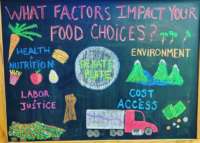
Choose food choices that conserve our planet’s energy and provide us energy and complement nature’s lifecycle.
Familiarization of today’s agricultural methods and food production practices and learning to recognize the consequences of each is critical to making a sustainable food choice.
The Edible School Garden’s photo shows factors that impact our food choices.
Factors include things as such, what did the food item undergo before it hit the shelf at the grocery store? Did it harm our environment to make it? Or did the manufacturing process promote sustainability?
Was it the best choice for pollinators, ecosystems, or our health?
Is the food you are consuming is providing energy to our bodies, is it fueling us, fueling and the planet?
Or is it slowing us down and harming us and our home? Learning to know your food, how it arrived on your plate – the origin of our food — It is critical to our health. For our family, a healthy and sustainable diet consists of food items that give ourselves and our children the nutrients and energy that is required for optimal performance, exponential energy and an opportunity to achieve their highest potential behavior.
We try not to consume foods processed with ingredients that may cause harm to our body or the Earth.
We buy local as much as we can and support the socioeconomics of our community and our environment.
We choose protein options that are plant based, and/or eggs and poultry that is pasteurized naturally from humanely raised organic farms.
We choose foods that are fresh and grown organically and naturally produced and packaged sustainably.
We choose foods packed with vitamins and promote energy and simultaneously meet the nutrition and hydration needs of the human body and promote a healthy environment.
It is achievable; children are hungry to learn.
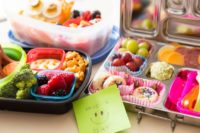 Favorites to our kids, lots of veggies, fruits, and natural grains and sugars. Organic pineapples, kiwi, blueberries, honeydew, strawberries, watermelon, grapes, apples, bananas, oranges, and salad with a ginger or honey vinaigrette. Carrots and broccoli and yellow and red peppers and tomatoes.
Favorites to our kids, lots of veggies, fruits, and natural grains and sugars. Organic pineapples, kiwi, blueberries, honeydew, strawberries, watermelon, grapes, apples, bananas, oranges, and salad with a ginger or honey vinaigrette. Carrots and broccoli and yellow and red peppers and tomatoes.
Our children eat healthy fats from avocados, nuts and seeds and lentils, and their fiber from beans, edamame, and chickpeas. Turkey and ham homemade lunch-ables and sandwiches and home-made chicken nuggets with organic coconut flour. Naturally processed and chemical-free, dye-free, and preservative-free such as oatmeal, crackers, bread, chips, pretzels, popcorn, and pasta. Home-made veggie lasagna, veggie and chicken pot pies, salsa, tacos, and burritos, to name a few. And, we avoid processed sugar and instead indulge in sweets that are organic and made from scratch with natural sweeteners.
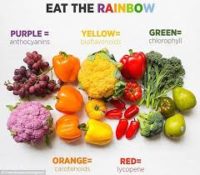
Eat a rainbow of foods.
Choose foods that are bright and appealing and full of color.
Choose eco-friendly food items at the grocery store and seek a grocery store that provides sells them.
Choose foods based on health specialists and physicians’ recommendations for our diet and nutrition and our children.
Choosing foods that are nutrient-rich, plant-based, and eco-friendly is an excellent teaching tool and a great table conversation about how one can help the planet and oneself. Children want to feel good and want the opportunity to learn about their health! They thrive on recognition and accomplishment and flourish when given opportunities to achieve.
When kids are praised for eating something that will help them grow, they are more apt to do it again! Scientific evidence shows us that encouraging words when used right, can have powerful positive effects on kids. This is because positive reinforcement can condition a child to repeat the praised behavior.

Kids Love To Learn!
Children like to know what they are eating and why.
Learning about foods they are eating, their ingredients and helping them to understand their diet options, will ensure higher chances that they eat a healthier food choice.
First-hand experience has given me the knowledge that kids want to be healthy, and they want to help Earth. The knowledge of our bodies and how they work and the importance of nutritious food and where it comes from is intriguing, and children want to learn. If adequately explained, they innately want to be healthy. They make healthier choices.
The satisfaction of knowing their diet is as nutritious and eco-friendly as possible and modeling sustainable behavior for her peers and others around them, will enable your child to feel important.
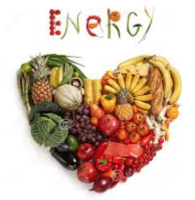
Food is fuel.
It powers every process in our body.
What we eat affects how we think and feel.
Science and research show that our mental, social, physical, and emotional, cognitive functions are proven to be a direct result of the intake of food into our bodies. Our food intake affects our mood and our energy levels and our overall well-being. Learning what to eat to have optimal health through food is learning to eat for energy.
Nine Essential Energy Giving Nutrients:
Fiber: Helps produce bowel regularity in a child. It can also play a role in reducing the chances of heart disease and cancer later in life
Vitamin A: Helps growth, assists the eyes in adjusting to dim and bright lights, keeps skin healthy, and works to prevent infection.
Vitamin C: Helps hold the body’s cells together strengthens the walls of blood vessels, helps the body heal wounds, and is important for building strong bones and teeth.
Iron: Necessary for adolescents to build healthy blood that carries oxygen to cells all over the body
Calcium: Helps to build a child’s healthy bones and teeth. It’s also important for blood clotting and for nerve, muscle, and heart function.
Protein: Helps a child’s body build cells, break down food into energy, fight infection, and carry oxygen
Carbohydrates: Help a child’s body to use fat and protein for building and repairing tissue
Fats: A great source of energy for kids and are easily stored in a child’s body. They are also important in helping the mind and body to properly use some of the other nutrients it needs to operate.
Take a closer look…
Take a closer look at the foods you are consuming and your family consume. Does your food contain these nine essential energy-giving nutrients? Is your food sustainably made and sold? If not, why?
Is it doing more harm than good?
Studies suggest the quality of the foods consumed over the lifetime affects the structure and function of the brain. Our food intake most definitely affects our mood and our energy levels and our overall well-being; food production and consumption inevitably affects the function and well being of Mother Nature too.
These nine essential nutrients can be obtained through sustainable measures. Measures that promote energy for our bodies and renewable energy for the Earth. There are options available to consumers; perhaps, if y0u have not begun already, it is time to explore what you are eating. Consider learning more about how you and your family can eat and live a sustainable lifestyle and make food choices that are not only good for you and your children but our environment and future generations.
Food and our health and the health of our planet are interwoven and vital to our survival.
The future is circular.
In September, in honor of the 74th UN General Assembly and Climate Week in NYC, I was fortunate enough to receive an invitation to attend the first Zero Waste Companies: Zero Waste East Conference. Zero Waste Companies is accelerating public-private partnerships by bridging the gap between policymakers, corporations, and municipalities. An immeasurable learning experience; an opportunity to hear first-hand from various sustainable industry leaders of global organizations’ circular economy success stories, waste prevention innovations, local and global perspectives as they shift to waste prevention and a circular platform. Learning in detail solutions for a more sustainable and circular economy and the actions being taken towards helping our planet and creating pathways to a cleaner and greener future was very inspiring.
Read more: Waste360: Five Themes from First-ever Zero Waste East Conference
Want to learn more about sustainable diets?
Quick facts and links to get you started.
Protect. Restore. Fund.
Need some inspiration to explore sustainable living? Watch this eye-opening Nature Now video with Greta Thunburg. Greta is a sixteen-year-old from Sweden who started the Fridays For Future Climate Strikes. Greta explains how nature is our answer to addressing our changing climate and how consumers have the power to choose our future.
Did You Know?
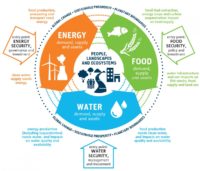
Our future is shaped by the things that we buy and the things we eat.
We can support sustainable food production and energy production and circular model based on our dollar.
What is a Circular-Economy?
Did You Know?
 Around the country, farmers and ranchers are looking to their land and operations as a means to produce renewable energy in various forms, including wind power, solar power, anaerobic digestion, and biomass energy. The use of such sustainable energy in agriculture allows farmers to not only reduce costs but also to generate long-term sources of income. Learn more: Renewable Energy In Agriculture.
Around the country, farmers and ranchers are looking to their land and operations as a means to produce renewable energy in various forms, including wind power, solar power, anaerobic digestion, and biomass energy. The use of such sustainable energy in agriculture allows farmers to not only reduce costs but also to generate long-term sources of income. Learn more: Renewable Energy In Agriculture.
Did You Know?
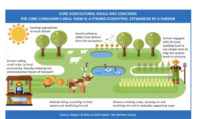
Regenerative agriculture leads to healthy soil, capable of producing high quality, nutrient-dense food while at the same time – improving, rather than degrading land, and ultimately leading to productive farms and healthy communities and economies.
Learn more: Regenerative Organic Agriculture.
Did You Know?
“Our soils are by nature linked to the micronutrient content of our food production.” Journal of Regenrative Organic Agriculture FAO 2015.
Soil health is essential to our health and the health of future generations. By adopting sustainable soil management practices, as the poster shows, how to reverse the increasing trend of nutrient-depleted soil. Nutrients in the soil are essential to healthy plants, especially plants we eat for food.
Did You Know?
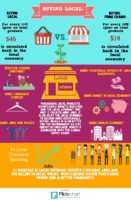
A society comprised of a multitude of small businesses has a healthier and more sustainable economy. Benefits of buying local.
Did You Know?
Impacts Of Changing Trends In Resource Consumption
Learn about positive impacts of a circular economy and sustainable future.
Did You Know?
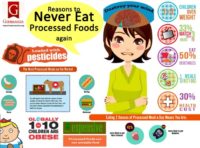
Why processed foods are not good for our health?
“Processed food” includes food that has been cooked, canned, frozen, packaged, or changed in nutritional composition with fortifying, preserving, or preparing in different ways. Any time we cook, bake, or prepare food, we’re processing food. Evidence is steadily streaming in that processed foods are linked with weight problems and poorer health. Processed foods have also been linked with unfavorable shifts in your gut microbiome that might promote inflammatory diseases.” NBC News August 2019
Did You Know?
Processed and refined sugar in excess amounts is not so good for our bodies or our brains.
Researchers found that sugar affects our brain function.
Did You Know?
Food is fuel! Our brain converts food into energy.
“Because the brain demands such high amounts of energy, the foods we consume greatly affect brain function, including everything from learning and memory to emotions.” Brain Facts Org
“Just like other cells in the body, brain cells use a form of sugar called glucose to fuel cellular activities. This energy comes from the foods we consume daily and is regularly delivered to brain cells (called neurons) through the blood. The food you eat also affects molecules in the brain that support cognition.” Medicine Journal, Dec. 20o9
“Our brains control our thoughts, movements, breathing, heartbeat, senses, and just about every other aspect of our lives. In order to maintain efficient functionality, the brain requires energy. Energy comes from the foods we eat and affects the overall performance of our brains. By paying close attention to the foods we eat, we’ll be able to control the function of our brains and, ultimately, our mood.” Geo Mind
Did You Know?
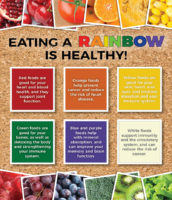
Eating A Rainbow is healthy!
“Phytonutrients are natural plant compounds found in fruits, vegetables, grains, beans, legumes, nuts, seeds, and teas. Unlike vitamins, minerals, carbohydrates, fats, and proteins, phytonutrients are not necessary for your body’s day-to-day operation. However, the health benefits they bring increase your quality of life and possibly the length of it.” “Eat A Rainbow.
Did You Know?
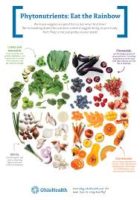
“Plants produce phytochemicals as a defense mechanism in order to survive environmental stressors. Those chemicals can also defend the human body against stressors, as well. Phytonutrients are known to help boost the immune system, sustain healthy blood sugar levels, act as antioxidants to protect against aging, regulate hormones, aid in optimizing brain function, support heart health, reduce blood cholesterol, improve lung function, and repair DNA damage responsible for some cancers, among other things.” Eat A Rainbow.
Did You Know?
Around the world, species are becoming endangered due to agriculture development. Top crops such as corn, soybeans, wheat, and cotton and the correlations with their production trends – fertilizer and pesticide use are highly used. For instance, pollinators, which are very important to our food production, are declining due to loss of habitat, followed by improper use of pesticides, pollution, and invasive species.
Foods that are made with soy or rice or high fructose corn syrup, for example, are not only bad for our bodies, but it’s also bad for our land, and our pollinators.
High Fructose Corn Syrup is frequently made with GMOs and produced and grown with chemically treated fields of corn. Foods that are grown and processed unnatural can cause tremendous harm to our ecosystems. The soil and water become polluted with chemicals used, corn grown in a field fertilized with pesticides and herbicides.
The fruits and seeds of flowering plants are an important food source for people and wildlife. Pollination is necessary for many plants to reproduce. We need pollinators. Without pollinators, the human race and all of our planet’s terrestrial ecosystems would not survive. Pollinators include species of bats, butterflies, moths, flies, birds, beetles, ants, and bees.
Did You Know?
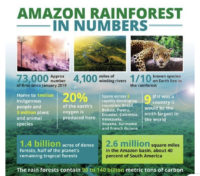
Did you know that at least half of the packaged items on supermarket shelves contain palm oil? From baby food to shampoo and chocolate to deodorant! Palm Oil is a versatile oil and used widely around the world as a biofuel and cooking ingredient. But it is not good for our environment! Because there is a high demand for palm oil production, the need to farm and produce it continues to grow. A large portion of our rain forests is suffering because of deforestation due to agriculture for palm oil. Do we really need to use palm oil to eat and to stay alive?
The answer is NO! But, we do need the Amazon!

Amazon fires are a threat to the wildlife that resides in the rainforest – and are a threat to us. Many of our medicines and our oxygen comes from rainforests, and rainforests are responsible for removing carbon from the air. More than 20 percent of the world’s oxygen is produced in the Amazon Rainforest. More than half of the world’s estimated 10 million species of plants, animals, and insects live in the tropical rainforests. Agricultural farming methods harming our rainforests? One way to ensure you are helping our rainforests is by buying products that are certified. The Rainforest Alliance RainForest Alliance Certifed is addressing the adverse effects and is advocating for stricter monitoring of rain forest deforestation.
Did You Know?

This picture to the left wast shown on cover of TIME Magazine from 1955 –it was featured recently on Loop’s Store Twitter feed. Apparently, throw away living was a “thing” in the mid-1950s.
Luckily now for us we are educated.
Did You Know?
Clean eating also means taking a look at your food storage and serving containers.
Today’s reliance on convenience foods and disposable products makes it very easy to dispose of waste. Consider purchasing items that will ensure your family’s health and their future and the health of those to come. During production, all this excess packaging emits toxins into our air and water, while food waste breaking down in landfills releases the potent greenhouse gas methane.
Give yourself a choice. Allow the opportunity to reduce landfill waste and to learn the importance of reusing, recycling, and reducing.
 Choose eco-friendly containers to pack lunches or to host dinners and parties. Teach your children why you choose them.
Choose eco-friendly containers to pack lunches or to host dinners and parties. Teach your children why you choose them.
Eco-Friendly options include stainless steel is durable and long-lasting and reusable, and just as glass helps to preserve your food keeping it tasting fresh and yummy! Send water in a reusable container with ice to keep it cold and fresh. Choosing paper or compostable bags or plastic and sending real silverware or bamboo or plant-based instead of plastic cutlery. Even bags that some snacks come in can be returned home to recycle.
Our Favorite Eco-Friendly Items
Eco-friendly options are affordable, durable, and easy to clean. Reusable items are an easy way to keep lunch fresh and safe until time to eat! Check out these Eco-Living favorite products of our families: Helping Ninjas™ Amazon Eco-Friendly List!
Links to learn more about sustainable diets and food production:
Changing the Global Food Narrative
How Eating Less Meat, Helps The Environment
Small Footprint Family: Sustainable Eating
Raising Generation Nourished: Real Food Lunch Box Ideas
Tree Hugger: Ten Ways To Pack Your Kids A Sustainable Lunch
FoodNetwork: Foods To Fuel Your Brain
100 Real Food School Lunch Ideas
Good Housekeeping: Healthy Lunch Ideas
Need Cute, Fast, and Eco-Lunch Ideas?





